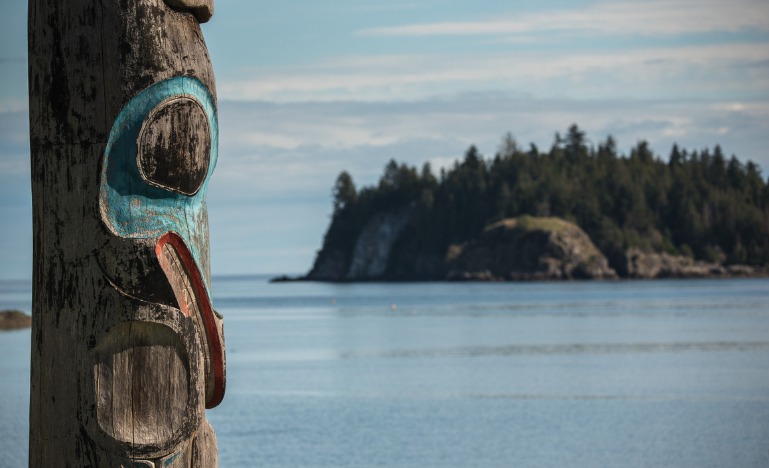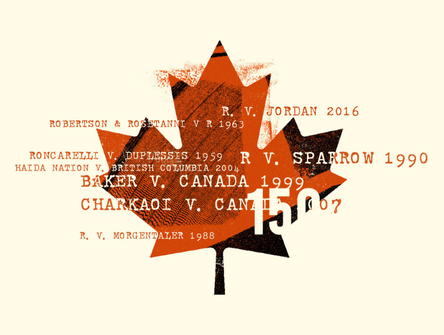Will the Haida Nation’s Rising Tide Agreement raise all boats?
The first-of-its-kind negotiated deal with British Columbia recognizes the Haida’s Aboriginal title to all of terrestrial Haida Gwaii.

The James Bay and Northern Quebec agreement, the first of Canada’s first modern land claim agreement and treaty, runs to nearly 500 pages, single-spaced.
The title lands agreement between the Haida Nation and British Columbia, signed in mid-April, wraps up in eight pages, plus four for signatures, appendices, and maps. Leave it to the Haida to find novel ways to save trees.
The “Rising Tide” agreement isn’t just about trees, of course. Nor is it a treaty. It doesn’t settle every outstanding question about the relationship between the Haida Nation and the Crown — it isn’t meant to. Facing a 2026 court date to decide the Haida’s land claim (a case the Haida Nation was widely expected to win), the province opted instead for direct negotiations that led to a first-of-its-kind negotiated deal recognizing the Haida’s Aboriginal title to all of terrestrial Haida Gwaii.
The deal doesn’t end the Haida’s court case, however.
“The agreement preserves a dual approach,” says Nigel Baker-Grenier, counsel for the Haida Nation.
“Usually you have to abandon the court route to complete negotiation, but in this case, the court claim stays active so that any issues that cannot be resolved by negotiation can be settled in court.”
But for now, the Haida have something that no other First Nation in Canada has managed to get: Crown recognition of all Aboriginal land title, secured outside both the treaty process and the courts.
“It’s not a matter of title recognition alone,” says Merle Alexander, principal lawyer at Miller Titerle & Co. in Victoria and a member of the Kitasoo Xai’xais First Nation.
“It’s that their claim is being recognized under their law, Haida law, that makes it such an accomplishment.
“That’s the elegance of this agreement — it’s not about the all-powerful Crown granting something but rather two constitutional partners coming to an arrangement.”
The Haida had certain natural advantages going into the negotiations. Haida Gwaii is a remote archipelago, which meant there were no overlapping claims from other First Nations to muddy the waters. The Haida Nation has had a governing council for 50 years and a constitution for 20. It has negotiated agreements with the provincial and federal governments that have placed 52 per cent of its land base and nearly 3,500 square kilometres of its marine space under formal protection, shared jurisdiction, or joint management.
And less than two per cent of Haida Gwaii is privately owned — which takes some of the pressure off one of the more innovative aspects of the Rising Tide deal. The agreement commits the Haida Nation to honouring all fee simple interests in Haida Gwaii. Fee simple properties will continue to be administered by Victoria, with the provincial land registration system still applying.
That element of the agreement is generating some angst. Tom Isaac, Aboriginal law partner at Cassels in Vancouver, published a paper late last month warning that Aboriginal title and fee simple rights are bound to collide at some point.
“The rights in land which flow from both a fee simple interest and Aboriginal title interest (which is constitutionally defined and protected) include exclusive rights to use, occupy and manage lands,” he wrote.
“The two interests are fundamentally irreconcilable over the same piece of land.”
That’s an incomplete view of Aboriginal title, says Baker-Grenier. What the agreement actually asserts is the Haida Nation’s “public law interest” in the land, which can “underlie private land ownership, similar to underlying Crown title.”
“If we take a more expansive view of Aboriginal title as being a sui generis public law interest in land, including powers such as law-making, taxation … then it can underlie private land ownership,” he says.
The Haida Nation has agreed to honour fee simple interests on Haida Gwaii and consent to private lands continuing to fall within provincial jurisdiction. Baker-Grenier says the purpose of these provisions is to balance the Haida’s Aboriginal title with the private land interests of third parties — a balancing act that is necessary for reconciliation.
“The Crown wrongfully appropriated Haida lands and sold them to third parties. This agreement prevents third parties from paying the price for the Crown’s wrongdoing,” Baker-Grenier says.
So what happens next? The province and the Haida are still talking, and over a two-year transition period, Haida laws will replace their provincial equivalents on Haida Gwaii.
It’s a table Miles Richardson has been seated at many times. As past president of the Council of the Haida Nation, he helped negotiate the Gwaii Haanas Agreement, which was the first modern nation-to-nation agreement between the Haida Nation and Canada.
He says recognizing title is just the beginning.
While speaking on a panel at the CBA’s Aboriginal and Environmental, Energy, and Resources Law Summit in Montreal recently, he told those gathered he expects the negotiation that lies ahead will be a “rough road,” but he’s confident they’ll get there.
“Indigenous leaders from early days have been consistently clear that reconciliation is very much tied up with the question of title,” he said.
“We’ve been fighting that battle for a long time. So this is a bold move and I think exactly the right move. What could be more obvious than Haida owning Haida land?”
As the Haida still haven’t come to an agreement with the federal government on taxation and the status of marine areas, talks with Ottawa must also happen at some point.
In a sense, the Rising Tide agreement will never be ‘finished’ in the way the James Bay treaty was because the Haida agreement is really about creating the ground rules for a government-to-government relationship.
“I don’t think there will ever be an attempt to reach anything like a final settlement,” says David Paterson, counsel for the Haida Nation.
While the idea behind the treaty process is to reach a final and certain result through comprehensive agreements, the Haida reconciliation approach, by contrast, assumes an ongoing dynamic relationship between the parties. And it will be subject to ongoing modification and adjustment through the coming decades, or even centuries.
“It’s not a zero-sum contest but a mutually beneficial enterprise,” he says.
“That’s the breakthrough.”
Could other First Nations pursue similar agreements? The Haida Nation’s advantages in these negotiations — a lack of competing claims, strong governance, and a small amount of fee simple land — may be largely absent in other land claims contexts, particularly those involving urban or semi-urban areas.
But the fact the Haida have done it proves it can be done elsewhere, says Alexander.
“The province has shown a way to tailor these negotiations to suit the circumstances of individual First Nations,” he says.
“It just goes to show that this is the endpoint — there’s no avoiding a government-to-government relationship.”
Sharing the panel with Richardson, Murray Rankin, BC's minister of Indigenous relations and reconciliation, told conference attendees the province is open to decision-making to meet the needs of First Nations.
He’s hoping to bring in more treaties that have been under negotiation for decades, but noted it’s not a one-size-fits-all approach. Some First Nations don’t want treaties, so the focus is on other initiatives.
And while there's been a history of conflict, Rankin thinks things have turned a corner between the province and the Haida, with a “respectful relationship” now entrenched in law. His hope is that will change things dramatically as negotiations move ahead.
“We did something truly historic here. I know it’s a term politicians throw around a lot, but I truly believe it.”


